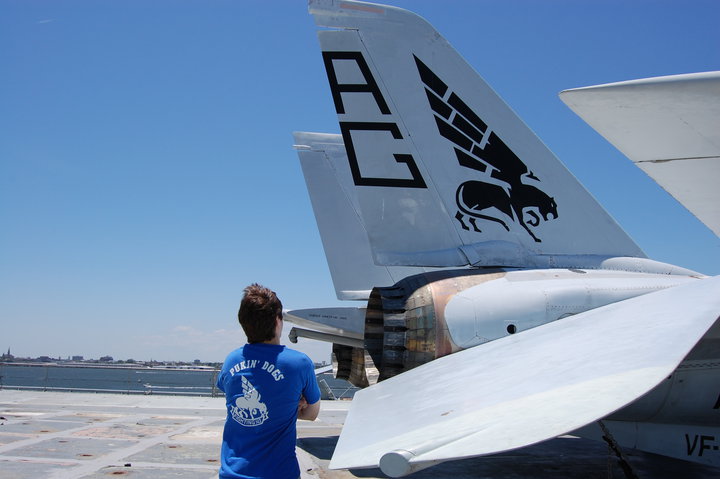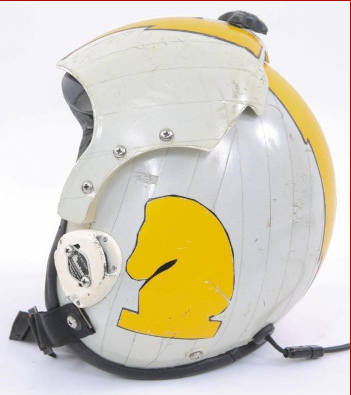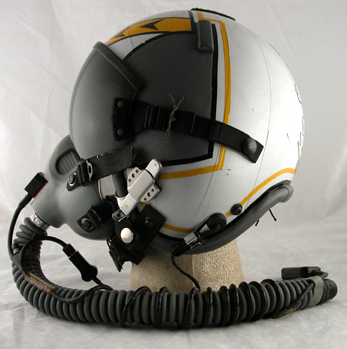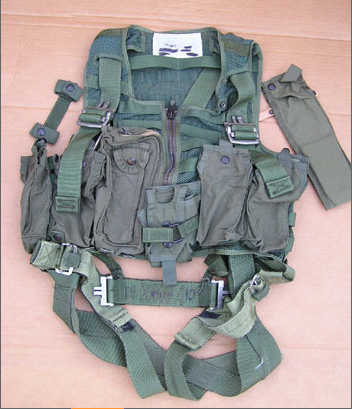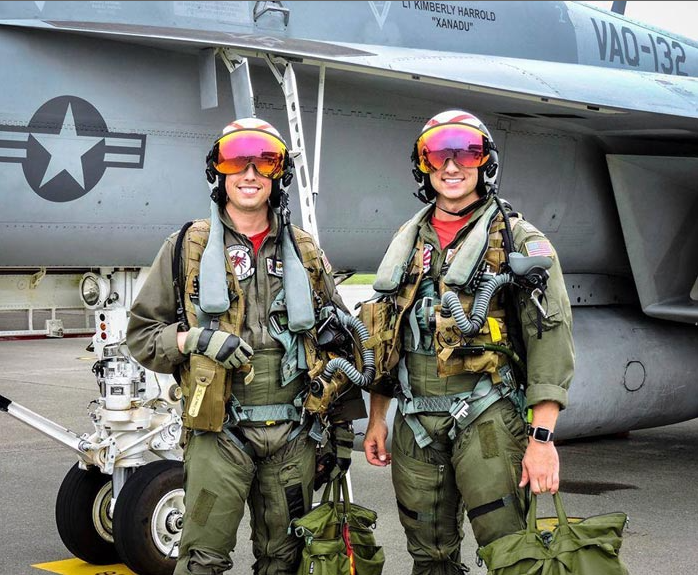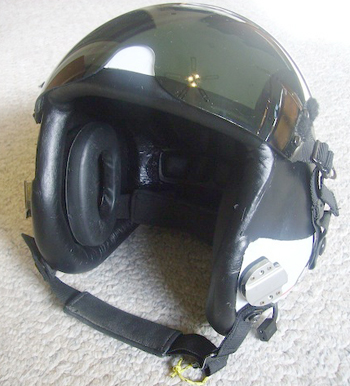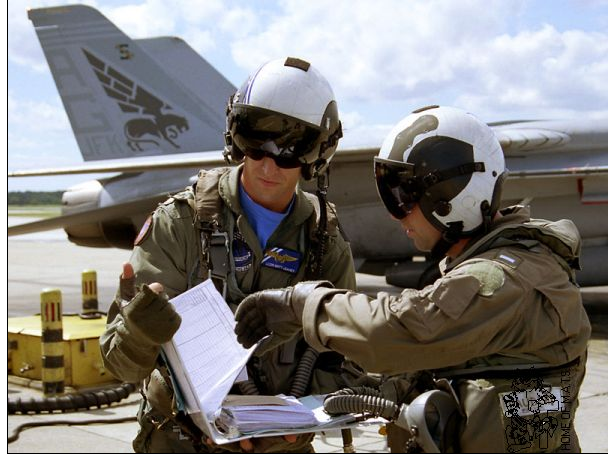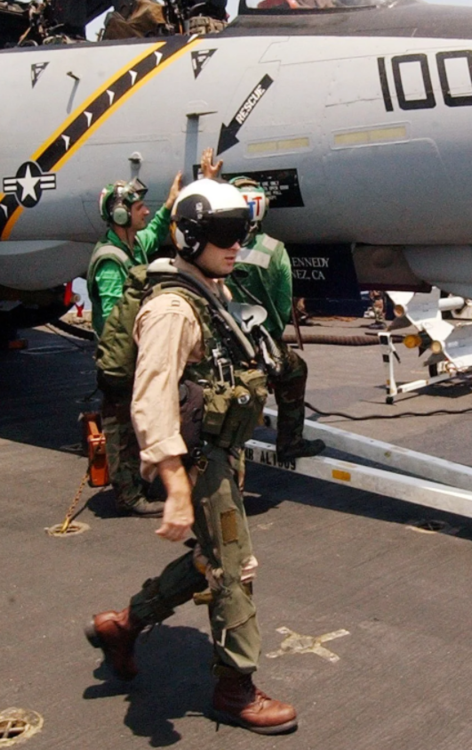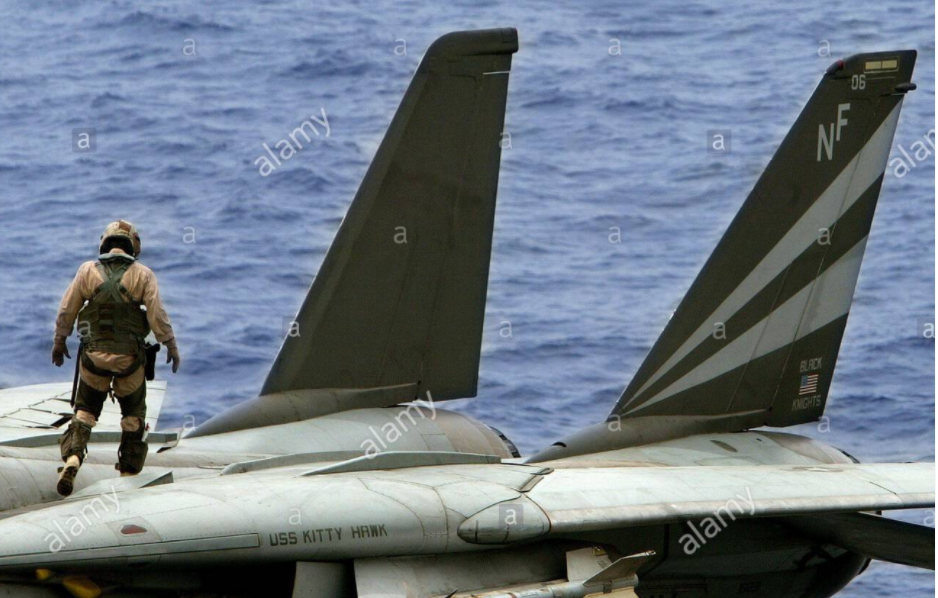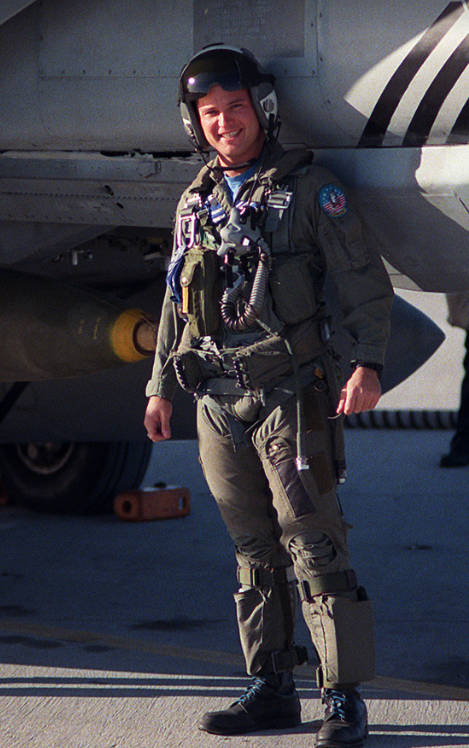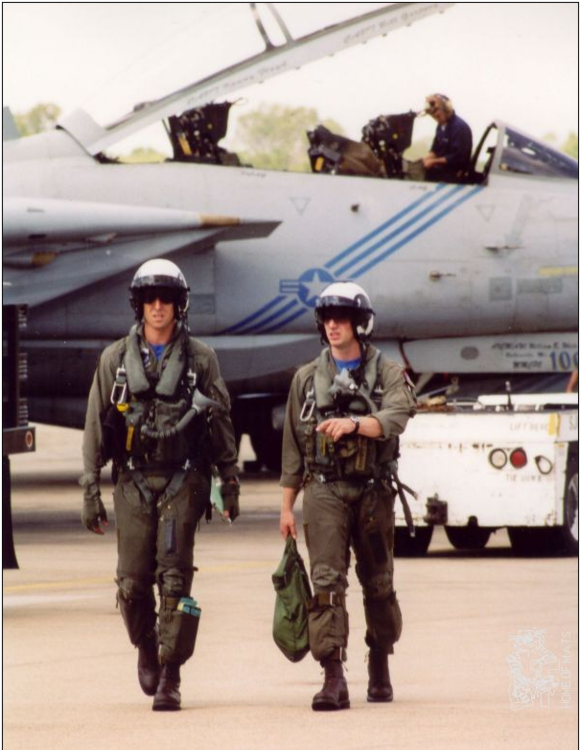-
Posts
581 -
Joined
-
Last visited
Content Type
Profiles
Forums
Events
Everything posted by Swordsman422
-
We got close to something like this with the Strike Fighters series. The semi-dynamic campaigns could sometimes cover years of combat and the squadrons would cycle through combat duty and upgrade aircraft by date settings. While aircraft, avionics, and weapon performance was as realistic as possible, the avionics functions and operations were not fully simulated. The focus was more about the tactics and less about button pushing. It was pretty neat to play, being part of an alpha strike launching from several carriers on Yankee Station or elsewhere, and it was VERY easy to mod. Still has probably the best representation of how modex numbers function in any flight sim I have yet seen. Unfortunately the developer walked away from it in 2013 and it hasn't been updated or upgraded since.
-
You had PPE on, right? You should be fine. Yeah, the Tomcat isn't FBW, so there isn't anything to prevent you from yanking so hard you rip her apart except your own discipline.
-
That's interesting. I wonder if that will then have to be something we set in mission editor then if we're not able to set the fuse altitude for the GPs and CBUs in the aircraft.
-
So you would then agree that, as a single-sortie game, that political forces and thus the political dimension of these weapons is outside the scope of DCS? Weapons of mass destruction cannot really be separated from the political gravity of their usage, so in this single-sortie environment, we cannot be taught the lesson that there are no winners in a nuclear war. Players only learn that the bigger the bang, the higher the score, the more quickly you win the mission. If we cannot then separate the political dimension from the weapon and cannot teach with it, why include it at all? By the way, the original with von Clauswitz is "mit anderen mitteln," "with other means" not "by." And it may seem semantic, but replacing "with" for "by" in the translation has a profound impact on the interpretation. The implication of "with" is that politics, diplomacy, and economic interaction do not cease once the shooting starts, but continues in parallel. The general state of the war doesn't really change drastically with the employment of a conventional weapon, one among hundreds of conventional weapons that have been or will be expended during the conflict. The employment of WMDs drastically changes the board and the considerations. There are more consequences to their use than just more kills with fewer weapons. Without that, whatever lesson we might choose to teach in a single-sortie game is lost. And if all you can really simulate about these weapons is their delivery, then an inert training round works fine. So what, exactly, do you gain from a functional nuke, fully realistic effects and everything, that you wouldn't get from the training round, that matters in a single-sortie sim. What's there for you if the potential consequences don't matter? I was using these examples in a facetious attempt to specifically highlight the spectrum fringes. I might have whiffed on that one, but it doesn't change the message that both ends are squeaky wheels that tend to make the most racket and have the most obnoxious and presumptuous things to say about the other. The final decision ultimately is up to the devs. They've said no. They will continue to do so for the foreseeable future. As to the two existing nuclear weapons in the game, they don't really behave like nuclear weapons, which is one of the existing complaints about them. My only feeling about that is "too bad." I think the inclusion of fully functional nuclear weapons are going to draw in those people with the emotional maturity of a stump for whom their employment has no gravity other than a bigger kill count, and that in turn probably will drive away those who are repelled by the gleeful detonation of nukes, who have the same emotional maturity as the neighboring stump, and I'm betting that this side has bigger numbers, not that they are morally superior. Oh, no. I well understood that it was a rhetorical question, but I chose to answer it anyway so that I could specifically show where I stand on simulating combat and I stand by it. Even in the case of a simulated environment, the more realism we're shooting for (no pun intended) then the more realistic the behavior should be. It shouldn't be about high scores and points. It should be about the enemy surrendering the battlespace. How much simulated killing is required to pass that marker. If we're just after more birds with fewer rocks, kill all the dots of the opposite color, then we aren't really simulating combat conditions. We're just playing a game, and we're doing a disservice to whatever we hope to learn about combat. That makes anyone who cries for more realism a hypocrite of sorts, which I can safely count myself among regardless of my own wishes (in 1.5, I taught myself how to hit moving targets with PGMs by flying around and engaging cars on the road). In that way it does matter, but thanks for, y'know, getting down on your knee to look me in the eye and explain this one slowly, like you might a very dull child. I really am precisely that stupid. Within a micrometer. I'm not kidding. No, it's not anything at all to do with my argument for nuclear weapons. That's why there is a "speaking further on..." which works just as well as "by the way." What it is related to is my answer to your oddly answerable rhetorical question. Funny how questions on subjective matters are. So it's a simulation. It's not reality. But it tries to replicate it and our behavior in the simulated environment is one of the vital components of that simulation. I mean, it's a hard line to draw because in the end, this is a game for the purposes of entertainment. In order to judge success or failure in a mission, there has to be a gate to pass. It gets less fun for some people if they don't get to splat the enemy soldiers because they've dropped their weapons and fled, which means that the player is victorious without the maximum body count. They might choose to blow away these simulated soldiers anyway, and then yeah... they actually have a specific number of bodies that they set out to create, and they'll be able to answer your rhetorical question as well. They'll point to all the enemy units and say "this time, that many." In the end, and precisely because it doesn't actually matter, it's still a moral question. They've already won, so all that remains is "I haven't satisfied my virtual bloodlust yet." So here we circle back to wondering what is gained from a fully simulated nuclear weapon other than neato effects and a more efficient weapon? Edit: And here I am now, guiltily holding my hat and recognizing my part in ripping up the rails of this thread. But in my own defense, I think that discussion of the A-6 Intruder should also include what weapon systems we want it to carry and a lively debate on why. Preferably without devolving into name-calling. We've hit a disagreement on this one that is interesting to say the least. It's part of the minutia, and this discussion is fantastic.
-
Here are my more logical arguments for "no" on the nuclear question: Historical fidelity. Yes, some of the platforms in this sim had the nuclear capability as well as the other questionable weapons systems. But while those other weapons were used, nuclear weapons have only been used in combat TWICE, and not by any of the platforms yet simulated in the game. White phosphorous, napalm, and cluster bombs have been used in historical conflicts by platforms represented in the sim. Nuclear weapons haven't. If we get a full fidelity B-29, you'll get my agreement. If the platform could use nuclear bombs and crews were trained on them, then an inert training round also wouldn't get any protest from me. I would rather the various devs focus on providing their aircraft with weapons that they actually carried in combat. That's not much fun for the folks who want the full glory of a nuclear detonation, but it can be argued that their desire to use these weapons is just as emotionally driven as those of us who find them distasteful. They want eye candy and kill count. How many birds can they take out with a single stone? How much of a mess can they make? Isn't the flash and bang cool to look at? That's a subjective consideration. Also, if we're going for platform fidelity, nuclear and chemical weapons in a sim also face the problem of their gravity. We're flying these missions in a vacuum with no political considerations of their use and no fallout (of any type). If we get a dynamic campaign system where dropping one nuclear bomb quickly devolves the campaign into a series of nuclear strikes where nobody wins, where flying through previously nuked areas with residual radiation can adversely affect both the functionality of the aircraft and the pilot character's health through the mission and campaign, then sure. I'm on-board. I find it hilarious that everyone is screaming for realism when these weapons contain an entire other dimension to consider with their fidelity that WP, CBUs, and napalm just do not have. The scope of DCS doesn't contain all the geopolitical considerations you'd have to make for using WMDs and so in that way, they're outside the scope of DCS. Developer effort. DCS needs a weapon damage overhaul. The previous examples given of how basic ground unit damage is represented is pretty pitiful. If this overhaul comes, how the damage is calculated is probably going to be far more complex per weapon that what we have with the current lineup of conventional explosives. Realistically simulating the effects of nuclear weapons would be far more demanding on the average computer. I doubt that ED would simplify one weapon effect just to fit it into the game, especially when that simplification is something we all complain about the conventional weapons for. Considering the customer base. Nukes are rightly controversial. While we can have a logical discussion about whether they should be included, plenty of people here obviously cannot. I doubt that this forum represents the entire customer base for DCS. There are plenty of silent voices out there with opinions of their own. One side looks at the other as uptight, bleeding-heart whiners who want to take away fun weapons because "ThEy DoN't LiKe NuKeS!" The other side sees the first as slobbering, kill-happy, embryonic psychos who just want to get a loud bang, a pretty flash, some massive collateral damage, and a ridiculous consequence-free body count. The truth of the matter is probably not that extreme, but I am willing to bet more people might walk away from DCS for including controversial weapons represented with the usual lovingly crafted detail DCS is known for than will be attracted because "YUUUS! FINALLY someone put TEH NUKEZ back in a flight sim." And DCS is, ultimately, a for-profit enterprise. So how many people is it okay to simulate killing? I can answer that for you, considering that I primarily fly top cover and CAS missions a LOT. How many does it take to remove the danger to the unit I'm protecting? How many of my allies' lives can I save? Can I do it by just taking out the handful of dudes in the radar van of a SAM site? Can I do it just by eliminating three or four armored vehicles rolling down the road towards them? Or leveling the building where an insurgent sniper is hiding? Or chasing off or destroying an enemy interceptor who plans to fly in and shoot down my friends? How many simulated deaths are acceptable? Enough to stop the threat. And that's specifically examples like this and not a city full of civilians I want to crater with a nuclear bomb. Or what's the point in nuking an enemy unit protecting the only road through a valley when my own forces then have to move through that valley, into the radioactive aftermath of the weapon that I dropped free of geopolitical considerations, because hey, this is a game. So let me turn the question back around. How many enemies is acceptable for you to simulate killing in one shot? 10? 100? 5000? Those numbers are just too small for you aren't they? It needs to be all of them, all at once, doesn't it? Why isn't a stick of conventional bombs enough? Speaking further on fidelity, one more thing that's missing is the morale considerations of units under attack. The series Wargame tackles this fairly believably by having the performance of attacked units continue to degrade until you lose control of them entirely and they ignore your orders to go hide and cower under cover. That effectively removes them from combat, even temporarily, without destroying them. Units in DCS don't retreat from the field. Without scripts, outflying an enemy aircraft won't ever cause him to turn tail and run, effectively surrendering the battlespace to you to save himself. An engagement will always result in the destruction of you or your enemy, either through weapons or fuel starvation. No one disengages and goes home in the face of better skill. An armored unit won't flee in the face of an attacking aircraft, removing themselves from the battlefield or even repositioning in consideration of defense-in-depth. Enemy infantrymen don't throw down their weapons and surrender, remaining defeated but alive. Victory in DCS ALWAYS means eliminating as many of the opposing dots as is required to fulfill the mission objective. Their continued existence is between the player and his goalpost, and that's pretty much all there is. If the white flag was a thing in DCS, then the number of morally acceptable enemy casualties would drop drastically, because we could cross the goalpost without eliminating every single one of them. Maybe that should be something to consider developing if we're talking about fidelity.
-
All the same, the use of weapons of mass destruction, even in a sim, feels pretty pointless. The other conventional weapons, while banned now, were legal at one point if problematic, and would not have been that tipping point to a full nuclear exchange and the end of everything. What's the point? A big, impressive bang and mushroom cloud? Using one weapon to wreck a bunch of stuff without the real world consequences? The shock value? Why do you want to be the guy who used a nuke? I don't want to be that guy. I want to be the guy who causes the nuclear bomber to fail his mission, and that's all I care for the presence of nuclear weapons in a flight sim. As to the consequences of not stopping him, getting a mission failed message is enough. I don't need those particular fireworks. I find nuclear weapons in flight sims distasteful because there are no consequences afterwards, especially in DCS. We don't have a dynamic campaign system with political implications of what you do and what weapons you use. You drop the bomb, get your rewarded effect, and that's it. Grand strategy games? Sure, bring them on. After they get used, it's a slippery slope that you're just as likely to lose from, and will probably result in failure than being an instant "I win" button. But being the pilot who drops the bomb? No thanks. I'm a member of the "Threads" and "The Day After" generation. Even as kids, we were pretty well aware of what the release of even a single nuclear weapon would mean. It wasn't going to just end there. You can't just turn the game off and walk away. If one goes, then the end of everything would follow very shortly thereafter. If DCS does that and makes sure you understand that after you've dropped that bomb, your pilot, your unit, your country, and the whole wide world beyond are fucked, then I'd be okay with their inclusion. To answer a question you asked someone else, would I use conventional weapons of questionable morality in DCS if they were added? If they were actually used in the theater I am using them in, on the platform that I'm using them with, for the mission that I am flying, sure. I'll bow to history and swallow my disgust. I mean, I've played U-boat and Luftwaffe sims before and that doesn't make me a Nazi. But I'm not going to drop napalm and switch camera views to watch the enemy troops roast to death and giggle and quote Apocolypse Now while I do it as if I am the most clever person in the world and have been the first person ready with such a quip. And I hope that they don't model the horrific aftereffects of that weapon to amuse those who want to be entertained by the violence. Just like I don't want to watch in intimate simulated detail the blast wave of an atomic bomb flattening a city and rendering it uninhabitable afterwards. I don't fly DCS for a body count, and that's what adding nukes would feel like to me.
-
On the current models of the F-14A and B that we have in hand, the gunport and active purge vent are supposed to be bare metal anyway. It's not just the HB_F14_EXT_02 you have to edit. It's probably the equivalent roughmet as well that provides the metallic alpha.
-
I'm more interested in the legacy system for Cold War, ODS, and OEF/OIF, but from the poll, the new system is winning by a landslide. Shame.
-
The only F-4 variants that operated from carriers were the F-4B,J, N, and S for the US, and the FG. 1 for the UK. If the F-4 is a C, D, E, F, or G, it was a land-based variant. F-4Bs are easy to distinguish from Cs and early Ds by the wing thickness over the landing gear wells, the refueling probe door on the starboard side beneath the canopy, and the shape of the inner wing pylons.
-
I confess that I am terrible with the carrier pattern and sim landings in general, and I am more than certain it is lack of a VR set that causes me this trouble. I can land planes very smoothly in real life, but then I can easily move my head and mark my visual site picture. That spatial awareness really helps me. In hundreds of attempts with the F-14, I have landed fairly reliably but scored only two OKs to my memory.
-
I can also understand the frustrations. Believe me, I'm there as well. But coming on here and throwing a tantrum like you're three 5-year-olds in a trenchcoat over your ONE THING not being fixed yet is a little silly, especially in the face of seven other threads dedicated to screaming about another ONE THING that they demand be fixed/released right-the-goddamn-hell now. Someone wants the pilot body NOW, the Forrestal NOW, the earlier F-14As NOW, Jester LANTIRN NOW, and it all runs at cross-purposes with HB's ever-changing to do list, and further frustrated by ED breaking something with every update that then has to be fixed AGAIN. I'm not chiding him for his feelings, but his tone. I'm pissed, too, but I'm not on here vomiting sarcasm about it. I think HB is already well aware of the community's frustrations, but it doesn't help when someone thinks they know better what should be a priority item, wants it now, and behaves like a brat about it and criticizes the progress that HAS been made as worthless because it's not his ONE THING yet. There are ways to say it other than this.
-
Just from a look around this forum, I can tell that by this statement, you pretty much just mean you. Look, man, if you can do better than HB, snap to it. It seems like DCS is a pretty frustrating codebase to work in. Get something on a module working right and the next update means you have to fix it again. No wonder there are delays, but if you think you can get the boulder to the top of the mountain faster than Sisyphus, be our guest. You aren't the only person to come on this forum to scream about one specific thing they think needs priority over everything else.
-
I understand where they're coming from. It's kind-of a shame that we aren't getting USS Saratoga, which was the only Forrestal-class to operate the F-14B. I was kinda looking forward to USS Ranger as well. With the Heatblur A-6 coming, the Ranger's all-Grumman air wing would have made an interesting campaign subject.
-

Since we are going to get 80s 90s carrier air wing
Swordsman422 replied to ustio's topic in Heatblur Simulations
I'll be honest, once the props are turning, the E-2D can pass for any variant of the Hawkeye with the proper livery to my eyes. It really will only matter when ED starts creating a more complex electronic environment than what we have now. What I'd really rather see is some form of EW other than on and off, and an AI EA-6B that can at least generally simulate the abilities of the platform, jamming a limited number of radar systems so that strikers have a safe corridor to get into and out of target areas. -
The low profile helmets are lighter, more balanced, more end-user friendly, and compatible with a broader range of night vision systems. Having worn the APH-6, HGU-33, -55, and -68, I can tell you that a properly-fitting HGU-33 won 't impede peripheral vision like the APH helmets will. Generally, the low-profile helmets are less fatiguing to wear just under normal circumstances. In a turning fight, the extra weight under G of the visor housing can be an impedance. I would rather have a helmet that functions better in 99% of my flight regimes and satisfies 99% of my utility needs than be exceptional in the event of my ejection but mediocre everywhere else, especially if that helmet makes the need to eject less likely by being a factor in losing a fight. Helmets can just as easily get ripped off in ejections as well. The slipstream gets underneath it and pulls it right off. The chinstrap snap is just firm enough to hold the helmet on normally, but if enough pressure is put on the snap in a way that might injure you, it'll pop out and the helmet will come off. Lt. Keith Gallagher lost his helmet and mask in a partial ejection from an A-6. If there is enough resistance to the slipstream, the slipstream is going to take it. The 600kt visor on the HGU-68 is supposed to stay in place in the event of an ejection at 600 KIAS, but the vast majority of ejections don't occur at speeds that high, so F-14 squadrons were comfortable replacing these visors with bungee visors that were more compatible with night vision systems. It's a gamble but there is just more operational utility in their decision. The HGU-33 visor housing isn't as protective of the visor as it might initially appear. After a while, you'll still get scratches and streaks, especially along the knob track, right in the middle of your vision, from just friction of moving the visor. The lock knob is also not particularly easy to work with in gloved hands, and binds sometimes where turning it both ways seems to just tighten it. But please remember that, having never flown fighters, this is only my opinion and experience, and is not reflective of the experience had by combat aviators.
-
I like how I spent 15 minutes writing my post and it only saved the pictures and not the text. The main difference between the HGU-55 and -68 is the helmet shell, and specifically the shell material. That's pretty much it. If there are no signs of the former 600kt visor, then your best bet is to just know the date range of the image unless the helmet is in your hands, then you just peel back the liner and look at the label. After 1998 you can expect that carrier based fixed-wing tacair crews were using the HGU-68 or one of its variants. Below are a -33, a -55, and a -68 for comparison of comms cords locations. The -55 and -68 have it in a very similar position. As to the color of the edgeroll being a defining attribute, this is also an HGU-55. The differences between the LPU-34 and -36 are internal and just a matter of inflation options. -34s are fully manual, where -36s also have salt water activated inflators. Good for someone who didn't stay conscious during ejection and can't inflate his own LPU. As far as I know, the US Navy still uses the MA-2 harness or a newer variation. With the CMU-36 moving to coyote brown, it's easier to distinguish. The USMC uses the PCU-78, with is a PCU-56 with MOLLE built in, essentially an integrated harness and survival vest.
-
Tomcat crews did in fact commonly use the HGU-68. Since the 600kt visor assembly was not compatible with ANVIS, it was removed at the squadron level and replaced with the same bungee visor used on the -55. These converts are sometimes, though not always, easily picked out by bare areas or obvious patches in the tape work where the visor track used to be. The LPU-34 is actually used for rotary-wing and non-ejection aircraft. Ejection seat aircraft were and still are using the LPU-36. This life preserver was introduced to the F-14 community around 2002, easily dated by the F-14 crew in the image above. VF-143's lone cruise aboard the John F. Kennedy occurred February to August of 2002 and their markings for this period were quite distinctive. The RIO in the above image is even the same man as appears in the image of the VF-143 crew from my previous post. Here, he's wearing the LPU-23 ( the ejection-seat equipped aircraft version of the LPU-21) and in the other image, the LPU-36 combined with the SV-2B survival vest, which was a short-lived combination. Around 2004, Tomcat crews were using the CMU-33/LPU-36 combo, still over the MA-2 torso harness. The below image is from 2003, and notice the pilot is still wearing the SV-2B/LPU-36 over the MA-2 torso harness. Whereas the crew in the next image from 2005 are wearing the CMU-33/LPU-36 combo, still over the MA-2 torso harness.
-
Interesting images. The documents must be right. I have seen F-14B crews wearing SV-2s configured for chest-mounted regulators, but I guess they must still be using LOX. This is the only image I can readily find. As far as I am aware, F-14 crews were still using the SV-2 as late as 2002. This shot is from VF-143 either before or after they cruised on the John F. Kennedy. Interesting to note that they are using the horse collar LPU. Funny story, when Revell redid their F-14 kit about 10 years ago for a limited run, they used this image as a basis for the pilot figures, and the molding was... just bad. The CMU-33/CMU-36 was initially adapted over the MA-2 torso harness. As far as I know, any CMU that has an integrated harness is for helicopter crews. The integrated harness/survival vest is the PCU-78, which is basically a PCU-56 with MOLLE loops. All of this stuff would fall outside the modelled period for HB's F-14.
-
Took me this long to have this d'oh moment after the gear discussion early in the thread: Heatblur talked about the MBU-5 and they aren't wrong for Iranian service. Iranian F-14 crews used the HGU-26/MBU-5/PCU-15 combination since Iran was mainly a customer of USAF gear up until that point. Another side note that HB doesn't need to correct but might bother ASE nerds, F-14B/D crews used a different vest and regulator configuration than F-14A crews of the same period did. The SV-2B vest was modified by removing the big radio pocket on the left of the zipper and the paracord cutter pouch on the right side. The radio pouch was replaced with a mounting bracket for an OBOGS regulator and the cutter pocket replaced with a combined radio/knife pocket similar to what is seen on the CMU-36. In the mid-90's it was pretty easy to pick out which type F-14 crews were flying based on the regulator and presence or absence of leg garters, since the SJU-17 seat in the F-14D had integrated leg restraints.
-
This actually isn't true. Some F-14As were rebuilt as Bs, but a good majority of the F-14Bs were new build. The F-14B (UPGRADE) was a major overhaul in the late 1990s to add the PTID, Sparrowhawk HUD, and DFCS. The As that were upgraded to Bs just had F-14B (and then later B (UPGRADE)) above the BuNos.
-

F/A-18D: The perfect trainer for DCS
Swordsman422 replied to gruntygame's topic in DCS Core Wish List
I'd get a D Hornet if one came down the pipe. All the USMC A-6 squadrons went to Ds, plus with liveries it could be used to represent 2-seat legacy hornets in any national service. The fuel sacrifice is worth it for the extra set of eyes. -

F14 Skinners thread (Paintkit in 1st post)
Swordsman422 replied to David A Sell's topic in DCS: F-14A & B
Originally the Ferris schemes were intended to confuse an attacker as to the aircraft's attitude and direction, basically the same thing that disruptive coloring did for ships in WWII. Unfortunately aside from false canopies, it didn't really work as expected. -
Another issue with name/callsign is that it was very rare for a) naval aviators to fly the aircraft with their name on it and b) an assigned flight crew to have their names on the same airplane. It was highly unusual for the flight schedule, the mission, air crew experience, and aircraft availability to align so that a pilot flew "his" own jet. You went with the aircraft that was able to accomplish the mission as fragged regardless of whose name was on the rail.
-
Agreed, I don't think that we'll see such specific mods as a Terminator, or an EJKai, or a Kurnass 2000. Those all have nation-specific avionics. But some of the external add-ons like the refueling probe or sparrow bay missile adapters or the TISEO could be reasonable with documentation and could be added as either animation arguments or loadout options. I admit I am really dreaming here. The pessimist that dominates my daily attitude insists that we'll get a single variant that reflects the typical F-4E for a single service for a given small time gap and everything else will just be represented as close as liveries will allow.
-
Oh, I don't think Heatblur's going to do it, and I'd rather they went ahead with their AI-to-flyable projects. I'm saying that when/if we ever get an F-4, it's probably going to be an E regardless of my hope for otherwise. I also hope that if we do get an E, we'll also get options for some of the localized modifications as animation arguments. By 1978, the IDF had modified their F-4E variant to accept countermeasures packs in the aft sparrow wells, adapter pylons for IR missiles in the forward wells, and male refueling probes similar to those seen on the later Skyhawks. I do have to admit it would be some good fun blasting around the Syria map in one of these beasts, shacking targets with an AGM-142 Popeye.

